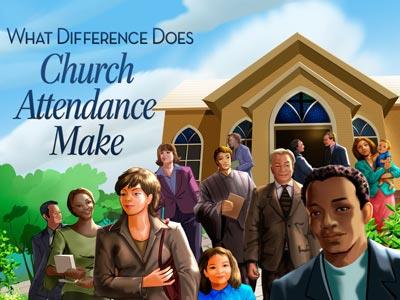-
Dynamic Tension Body Building Series
Contributed by Joseph Smith on Nov 28, 2017 (message contributor)
Summary: Montgomery Hills Baptist Church: As the old Charles Atlas method used muscle against muscle to build young bodies, so the church may use its forces against the values of the world to build itself. Inclusion rather than clannishness, love rather than comp
If you are male and of a certain age, you will remember the little cartoon stories that ran in every comic book or came wrapped around your Bazooka bubble gum – stories about a 97-pound weakling who was always about to approach a curvaceous bathing beauty but was invariably upstaged by a six-pack set of sculpted abs. Those cartoons were ads for the Charles Atlas bodybuilding system, and, in each one of them, after our 97-pound weakling had kicked a beach chair to vent his anger, he sent for the Atlas system, built his body, and went back and grabbed the girl, who now swooned over this glorious new muscle man. So simple, so straightforward, so successful: acknowledge your weakness, get motivated, buy the system, and come back victorious.
Charles Atlas claimed that the ads were versions of his own story, and called his system “Dynamic Tension Body Building.” The idea was that you did not need weights or barbells or other equipment, but that if you opposed muscle to muscle in your own body, you would gradually build that body, naturally and without injury. Nothing to lift, nothing to carry, just pushing one muscle against another, one force against another. It surely did work for Atlas. If you want to see the results today, look at the statue of Alexander Hamilton in front of the Treasury Building downtown; Charles Atlas posed for that. Dynamic tension bodybuilding gave that man a physique that was widely admired. And he sold millions of copies of his dynamic tension bodybuilding instructions to scrawny kids reading comic books.
Now one look will tell you that all this juvenile comic book reader and bubble gum chewer ever did was to read the little stories and dream a bit. I never sent for the course, I never got into bodybuilding, though I do think I did very well indeed on getting the girl! But when I think about the theme our pastor has laid out for us – “We Are Some BODY” – I wonder if there is something to be learned from Brother Atlas. I wonder if there is a spiritual bodybuilding exercise that might be effective. Dynamic tension, the pitting of muscle against muscle, force against force. If we as the church are to be the body of Christ, then what exercises might we use in order to build ourselves into an effective, attractive, and vigorous body? We are, says the theme, some BODY. Ah, but are we the 97-pound weakling or are we the sculpted abs that win the admiration of others and take home the victory?
Sometimes, in our culture, the church looks very much like that 97-pound weakling. Despite our rich heritage, despite there being thousands of churches around, despite a plethora of preaching and a slew of singing, many people see churches as weak, irrelevant, and pointless. Relics of the past, nice to have around when you want to hatch, match, or dispatch, but not the robust leaders of the culture. Parents have told me that Sundays can no longer be reserved for church, because schools and athletic teams and everybody else uses that day for their pursuits. Even a casual listen to the banter coming from my radio tells me that most folks treat the day of worship as a day of sleep and of casual recreation. On Sundays you can drive with reckless abandon on streets that during the week are clogged and congested, because sleeping in is the priority.
And the weakness of the church is not just about Sabbath observance. Deeper, it’s about justice, it’s about morality, it’s about what it means to be a person of integrity. Our culture does not value spirituality. It values material success, it applauds athletic prowess, it smiles on sexual excess, and it thinks you are impossibly bigoted if you have a love for God. We have been reduced, many of us, to the status of the 97-pound weakling of Charles Atlas’ cartoons, frustrated because we get little acceptance and little respect. We just don’t seem to count. Someone once tried to tell Russian dictator Joseph Stalin that what he was planning to do with his army would be opposed by the Pope; Stalin’s contemptuous reply was, “The pope? How many divisions has he got?” Today I suspect we hear the world saying to us, “The church? How much influence have you got?” The church is a 97-pound weakling that does not matter much.
Against all of that, however, today we pose the dynamic tensions built into the third chapter of the Ephesian letter. You cannot read this chapter – in fact, you cannot read Ephesians – without being struck by the place of the church in God’s plan. And, more than that, you cannot avoid the impression that the church, the body of Christ, is supposed to be strong and victorious, powerful and intense. In the passage you heard this morning, there are so many strong words: boldness, confidence, power, fullness. Not words you associate with 97-pound weaklings. But the church, at the center of the will of God, and the instrument of the power of God. I think there are some dynamic tension body building lessons here for us. And we don’t even have to send off and pay for them! They are right here in the Scriptures.

 Sermon Central
Sermon Central



